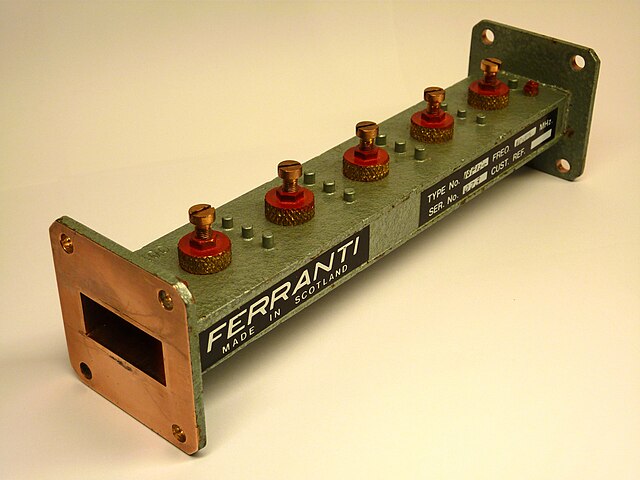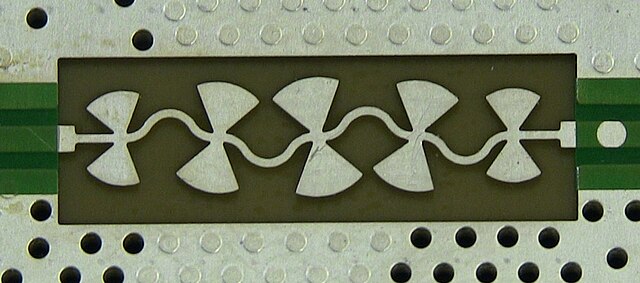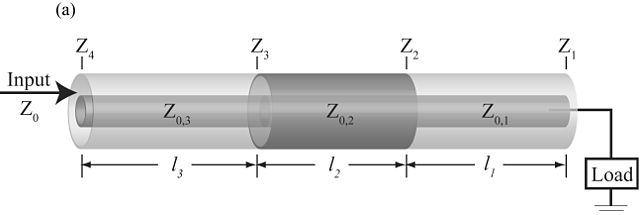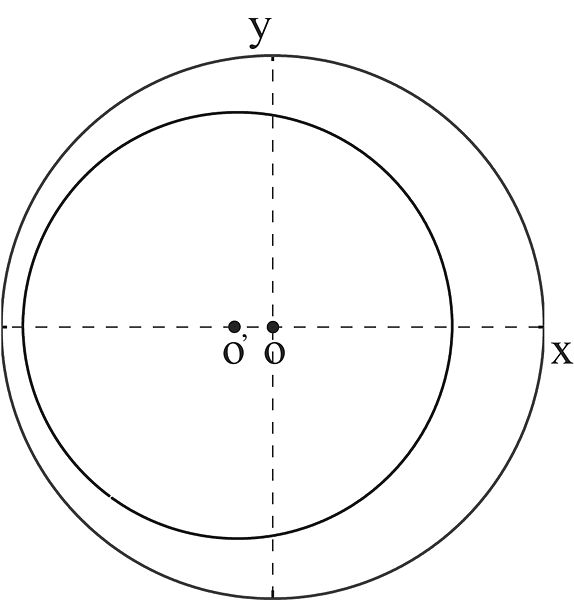Distributed-element circuit
Distributed-element circuits are electrical circuits composed of lengths of transmission lines or other distributed components. These circuits perform the same functions as conventional circuits composed of passive components, such as capacitors, inductors, and transformers. They are used mostly at microwave frequencies, where conventional components are difficult to implement.
A low-noise block converter with distributed elements. The circuitry on the right is lumped elements. The distributed-element circuitry is centre and left of centre, and is constructed in microstrip.
A collection of coaxial directional couplers. One has the cover removed, showing its internal structure.
A waveguide filter
Butterfly stub filter
In electrical engineering, a transmission line is a specialized cable or other structure designed to conduct electromagnetic waves in a contained manner. The term applies when the conductors are long enough that the wave nature of the transmission must be taken into account. This applies especially to radio-frequency engineering because the short wavelengths mean that wave phenomena arise over very short distances. However, the theory of transmission lines was historically developed to explain phenomena on very long telegraph lines, especially submarine telegraph cables.
One of the most common types of transmission line, coaxial cable
A type of transmission line called a cage line, used for high power, low frequency applications. It functions similarly to a large coaxial cable. This example is the antenna feed line for a longwave radio transmitter in Poland, which operates at a frequency of 225 kHz and a power of 1200 kW.
A simple example of stepped transmission line consisting of three segments
Image: Polar Smith








